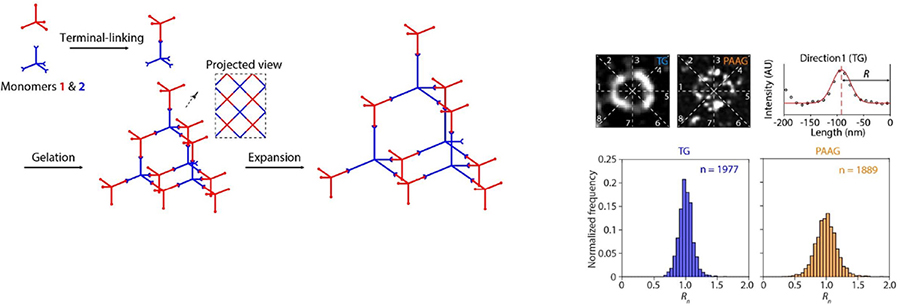A highly homogeneous polymer composed of tetrahedron-like monomers for high-isotropy expansion microscopy
[Publisher Link] [Local Copy]
Gao R*, Yu CJ*, Gao L, Piatkevich KD, Neve RL, Munro JB, Upadhyayula S, Boyden ES (2021) A highly homogeneous polymer composed of tetrahedron-like monomers for high-isotropy expansion microscopy, Nature Nanotechnology 16:698–707. (*, equal contribution)

Expansion microscopy (ExM) physically magnifies biological specimens to enable nanoscale-resolution imaging using conventional microscopes. Current ExM methods permeate specimens with free-radical-chain-growth-polymerized polyacrylate hydrogels, whose network structure limits the local isotropy of expansion as well as the preservation of morphology and shape at the nanoscale. Here we report that ExM is possible using hydrogels that have a more homogeneous network structure, assembled via non-radical terminal linking of tetrahedral monomers. As with earlier forms of ExM, such ‘tetra-gel’-embedded specimens can be iteratively expanded for greater physical magnification. Iterative tetra-gel expansion of herpes simplex virus type 1 (HSV-1) virions by ~10× in linear dimension results in a median spatial error of 9.2 nm for localizing the viral envelope layer, rather than 14.3 nm from earlier versions of ExM. Moreover, tetra-gel-based expansion better preserves the virion spherical shape. Thus, tetra-gels may support ExM with reduced spatial errors and improved local isotropy, pointing the way towards single-biomolecule accuracy ExM.
Resources associated with this Publication:
[Expansion microscopy: physical magnification with nanoscale precision]